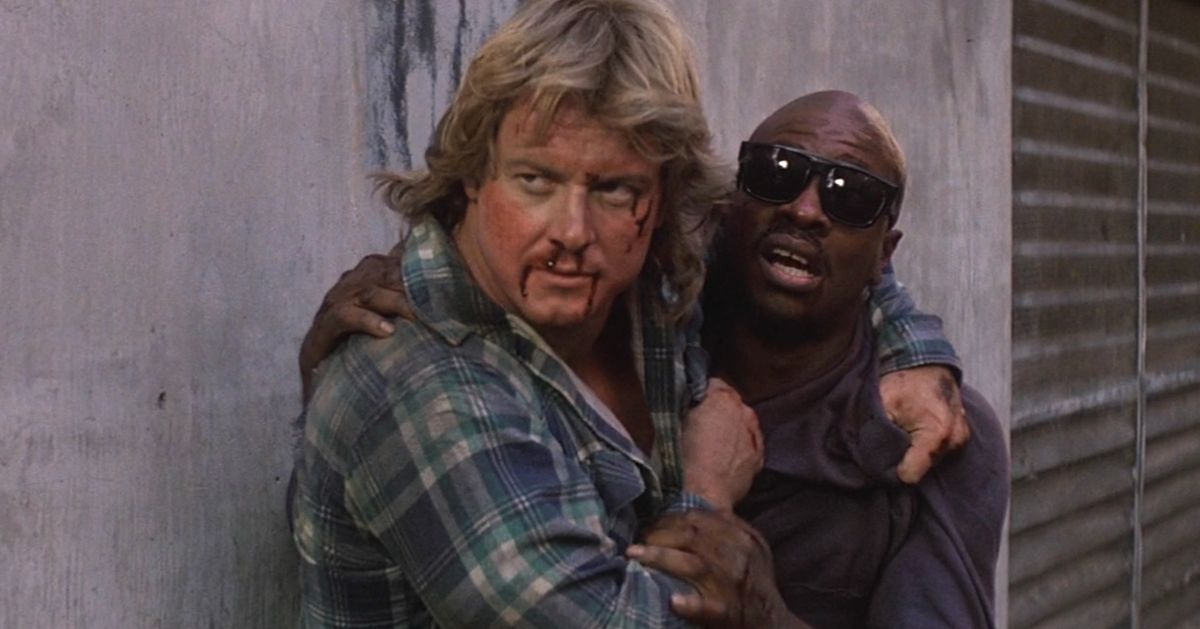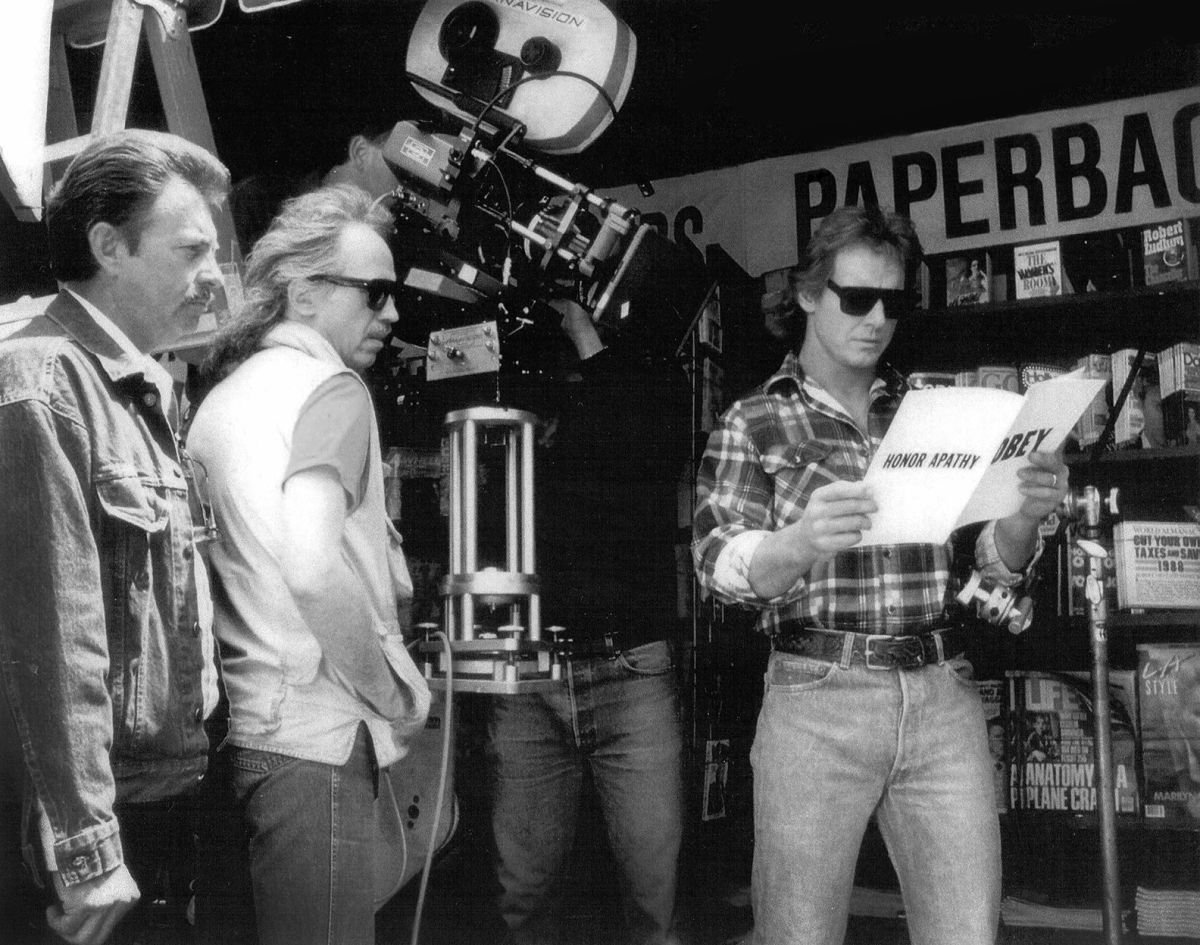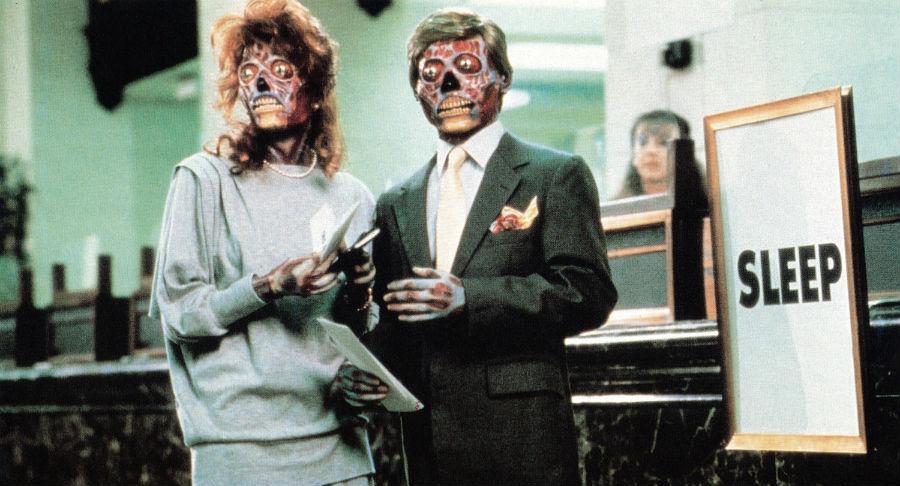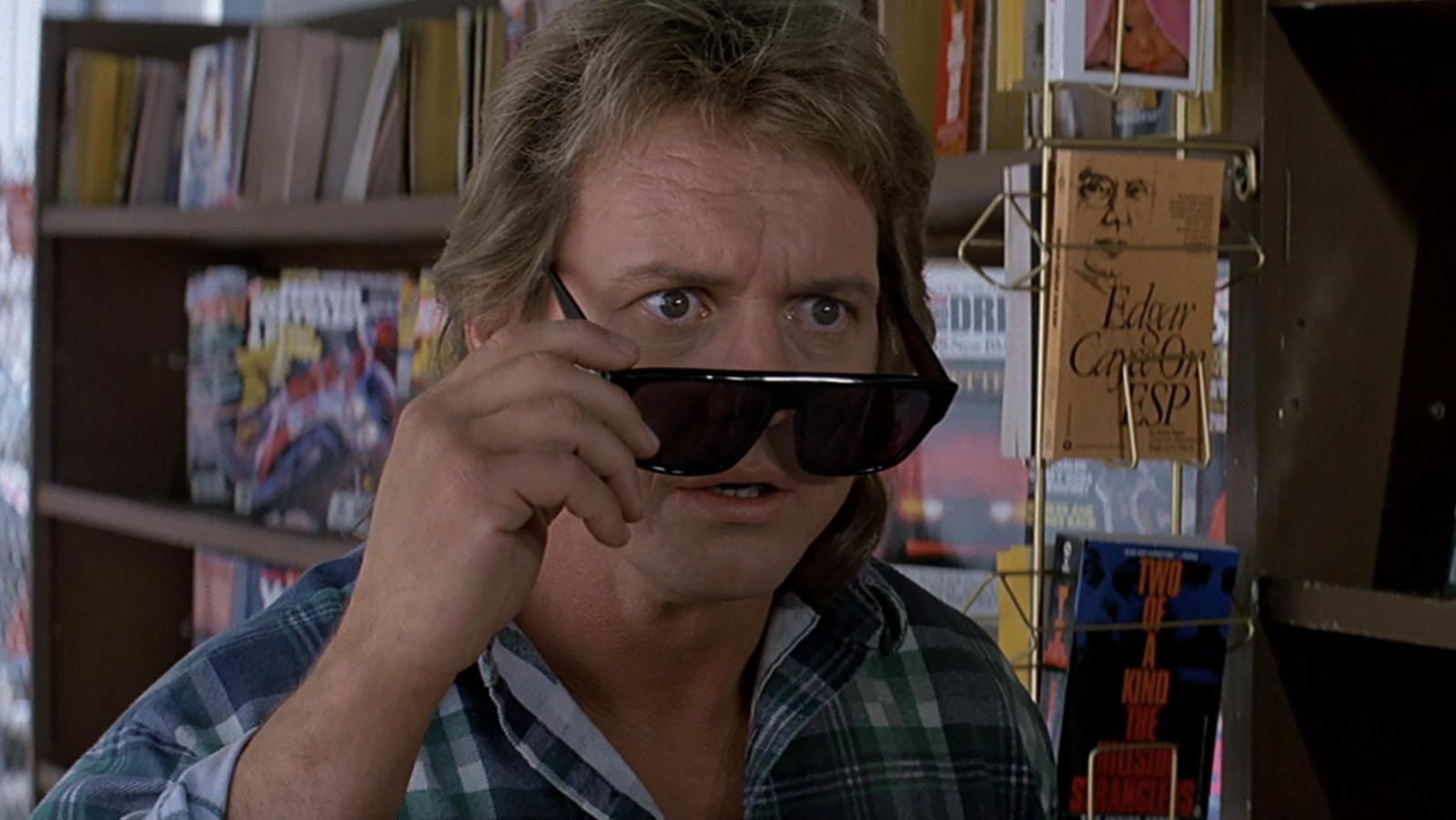🎬 Rewind This Month In Movie History: They Live
🗓️ Date of Release: 4 November 1988

“You see them now? You don’t anymore.”
Before “OBEY” became a pop-culture mantra splashed across street art and T-shirts, John Carpenter was quietly loading his creative shotgun for one of the boldest sci-fi statements of the 1980s. They Live didn’t just spring from alien paranoia it came from Carpenter’s deep frustration with Reagan-era greed and media manipulation. Inspired by Ray Nelson’s 1963 short story Eight O’Clock in the Morning and its comic-book adaptation Nada, Carpenter saw the perfect vehicle to channel his anger through satire.
“By the late ’80s, I’d had enough. I saw what was happening to the country — the greed, the yuppies, the ‘me decade’ — and I decided I had to make a statement.” — John Carpenter
After clashing with studios over Big Trouble in Little China, he went rogue, partnering with producer Larry Franco under his independent Alive Films banner to make a movie that would bite the hand that fed Hollywood.
“I just wanted to make a fun action movie that also said something about the world we were living in.” John Carpenter
The result was They Live a lean, rebellious, and eerily prophetic film where a pair of sunglasses exposes the horrifying truth: our world is run by those who command us to buy, conform, and stay asleep.

Carpenter’s next bold move was casting a professional wrestler Rowdy” Roddy Piper as his unlikely hero. Carpenter met Piper at WrestleMania III and was struck by his raw charisma and blue-collar toughness.
“Roddy wasn’t a movie star — he was real. He came from the streets, and that’s exactly what the character of Nada needed.” John Carpenter
KEITH DAVID SIGNED THEY LIVE NOW IN STOCK
Instead of hiring a polished Hollywood lead, Carpenter wanted someone who looked and felt like an everyman, a drifter who fights back. Piper’s wrestling background gave him natural timing, physical presence, and grit, which translated perfectly to screen.
“Roddy could tell a story with his body. He understood rhythm, he understood emotion, and he could take a punch, literally and figuratively.” John Carpenter
The result was one of the most unconventional and iconic performances in sci-fi history and a perfect match for Carpenter’s rebellious vision.

🔍 Quick Facts
Currently Streaming On: MUBI and MUBI on Prime (Australia)
Genre: Sci-Fi / Action / Thriller
Starring: Roddy Piper, Keith David, Meg Foster
Director: John Carpenter
Producers: Larry J. Franco, John Carpenter
Production Company: Alive Films
Distributor: Universal Pictures
💰 Box Office Performance
Budget: ~US $4 million
Worldwide Box Office: ~US $13.0 million
Australia Box Office: ~A$1.3 million
Adjusted for Inflation: ~US $35 million (today’s equivalent)
Box Office Rank (1988): #74 worldwide
Fun Fact: Opened at #1 in the U.S. thanks to Piper’s wrestling fanbase.
Independent Gamble: Carpenter’s Investment
On a shoestring budget of about US $3–4 million. Universal handled distribution, but Carpenter retained creative control and a share of the profit, meaning he personally shouldered part of the risk. The film earned roughly US $13 million worldwide, tripling its cost and quietly turning a profit. Though not a blockbuster, Carpenter reportedly made around US $2–3 million.
“It wasn’t a huge hit, but it made money, enough to make me smile.” — John Carpenter
⭐ Critical Reception
Average Rating: 87% (Rotten Tomatoes)
Reviews at the Time:
-
“A sharp and subversive blend of sci-fi and satire that hits harder than most big-budget thrillers.”
-
“A great idea with uneven execution — Carpenter swings for the fences, but sometimes misses.”
“I wanted to make something fun, but it had to mean something too. They Live was my middle finger to Reagan’s America.” — John Carpenter
❤️ What Audiences Loved
-
The sunglasses concept — seeing the world for what it really is.
-
The six-minute alley fight, one of cinema’s longest and most iconic.
-
The anti-consumerist satire that feels even more relevant today.
-
Carpenter’s stripped-down, synth-heavy score.
😒 What Divided
-
Some found the pacing uneven.
-
The message felt too on-the-nose for certain critics.
-
Low-budget effects, though many now see that as part of its charm.
“You have to understand, it was about Reaganism. About unrestrained capitalism. I grew up in the ’60s, and by the ’80s, it felt like we’d sold out everything we believed in.” John Carpenter
He’s always described They Live as a warning, that the real horror wasn’t aliens, but the systems of power and media manipulation people accept without question.
🗣️ Memorable Quotes
“I have come here to chew bubblegum and kick ass… and I’m all out of bubblegum.”
“Stay asleep.”
“Obey.”
“The world needs a wake-up call, and we’re gonna phone it in.”
🎥 Behind the Scenes
Fun Facts:
-
Based on Ray Nelson’s short story Eight O’Clock in the Morning.
-
The alley fight took six days to film.
-
Carpenter used real homeless extras for authenticity.
-
The “OBEY” imagery later inspired Shepard Fairey’s street art.
-
Carpenter composed the score himself.
🎵 The Music of They Live
As with most of his films, John Carpenter composed the score himself with longtime collaborator Alan Howarth, crafting a slow, bluesy pulse that perfectly captures the mood of a drifter wandering through a decaying America.
Carpenter said he wanted it to sound “like America, like the streets, like the struggle,” and the result is one of his most distinctive and understated scores, a minimalist rhythm that turns paranoia into atmosphere and has since become a cult favorite among fans and synth artists alike.
🧠 Pop-Culture Impact
Cultural References:
-
The “OBEY” and “CONSUME” imagery became pop-culture staples.
-
Influenced artists, musicians, and designers, from Shepard Fairey to Rage Against the Machine.
-
Its social commentary still appears in political memes and fan art.
Franchise Influence:
While They Live never became a franchise, its mix of rebellion, grit, and satire has shaped countless works in sci-fi, art, and gaming.
🎮 Pop Culture Connection: They Live → Duke Nukem
Few films have left fingerprints on gaming like They Live. The creators of Duke Nukem 3D admitted that Duke’s macho tone and one-liners were lifted straight from John Nada.
“I have come here to chew bubblegum and kick ass… and I’m all out of bubblegum.”
That line, Piper’s most iconic, became Duke’s calling card. Beyond quotes, the antihero’s swagger, alien-fighting chaos, and satirical edge all echo Carpenter’s vision. Duke Nukem may have swapped subtlety for neon and bullets, but its DNA is pure They Live.

💵 Roddy Piper’s Pay and Aftermath
Roddy Piper didn’t get rich off They Live, but he did earn more than he ever made in wrestling at the time. His reported salary was between US $250,000 and $500,000, plus a small backend percentage if the film turned a profit.
“It paid better than wrestling, but not by much.” Carpenter confirmed Piper “didn’t get rich, but he got respect". Roddy Piper
After the film, Piper found himself caught between two worlds, too much of a wrestler for Hollywood, too independent for the studio system. He was offered more generic action roles but turned many down, saying, “They wanted me to play the same guy with a gun and no brains. I’d already done the best version of that with John.”
“Roddy was a natural. If Hollywood had been smarter, he would’ve had a long career as a leading man.” — John Carpenter




